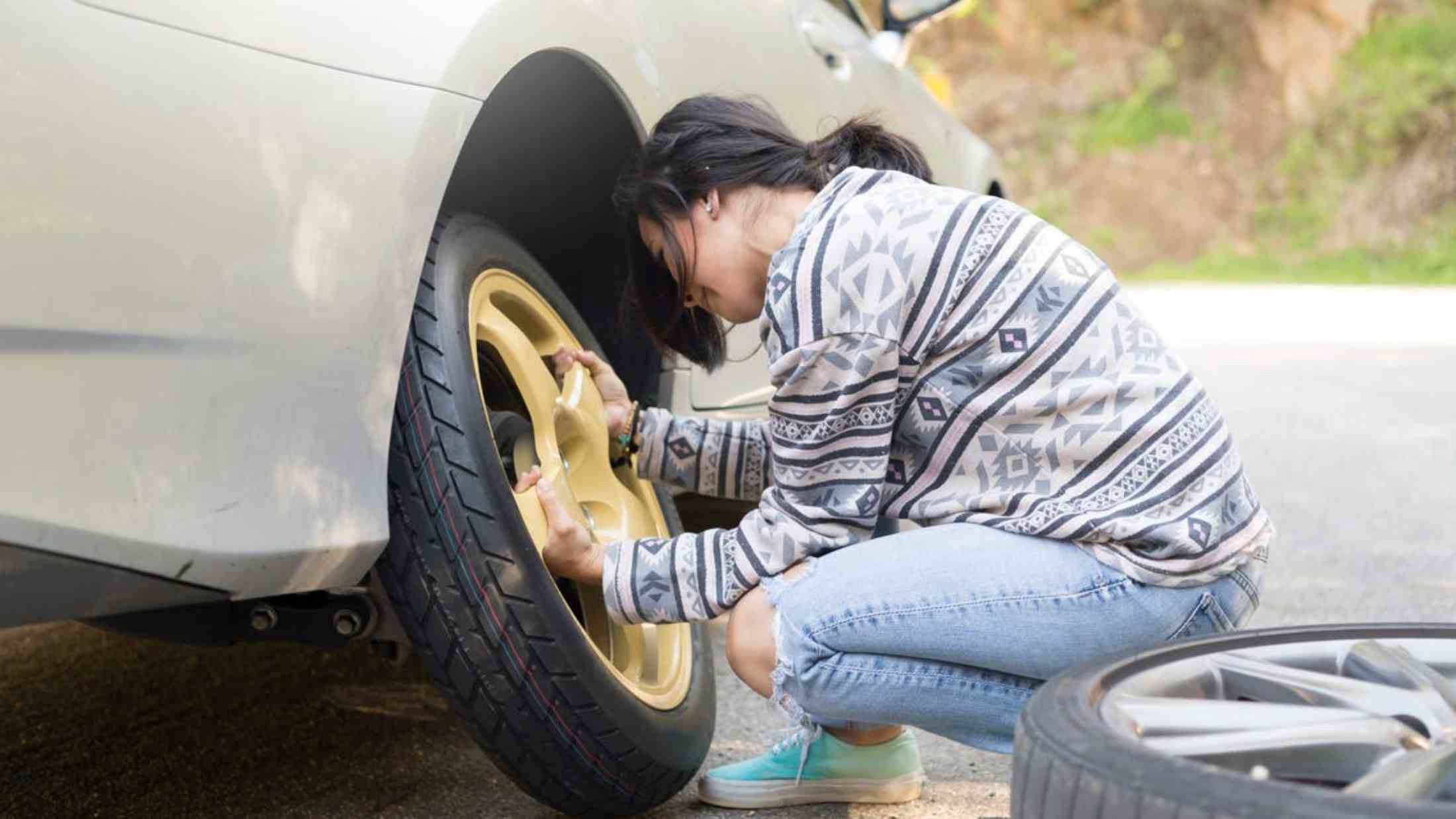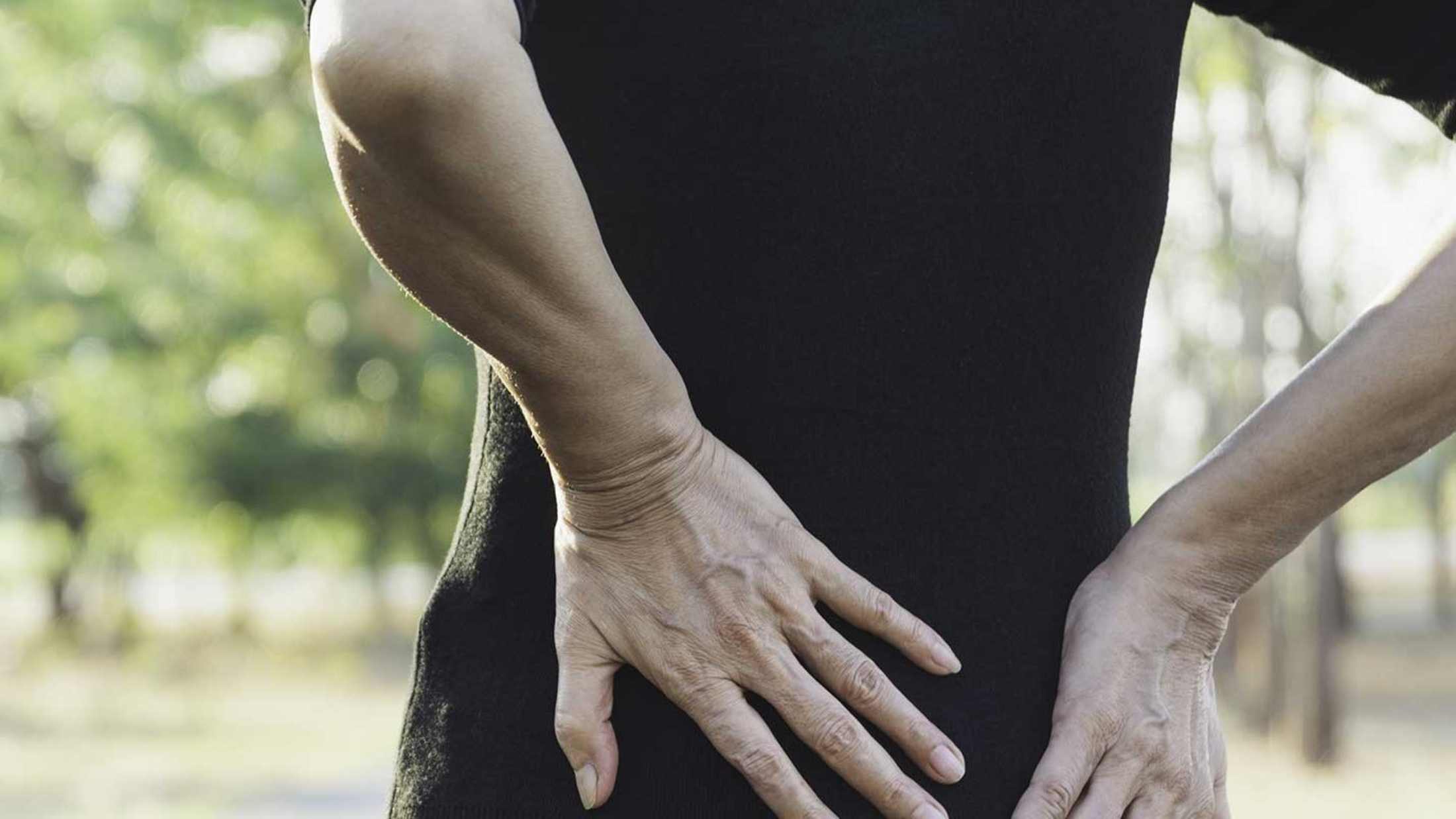A flat tyre can happen when you least expect it. But you can stay safe and avoid problems by checking your tyres often. Knowing what signs to look for – and what to do if you get a flat tyre - can help you stay safe.
This guide gives simple tips to help you spot problems early and know what steps to take if your tyre goes flat:
- How can I avoid a flat tyre?
- What’s the difference between a blowout and a slow puncture?
- What should I do if I get a flat tyre?
- How do I change a flat tyre?
- What if I have a flat tyre and no spare?
How can I avoid a flat tyre?
A flat tyre can happen at any time. But there are a few signs you can look out for which could indicate your tyres are about to go. Inspect your tyres regularly so you’ve got the best chance of catching potential flats before they happen.
Before you head out on your next adventure, check for these four signs:
Low pressure
If your tyre pressure drops suddenly, or goes down a little each day, you’re on your way to a flat tyre. Make a habit of checking your tyre pressure regularly - and don’t forget the spare!
Don’t forget, heavy loads and extra passengers can make a big difference to your tyre pressure, so check your recommended tyre pressure. You’ll find it inside the fuel filler flap, on the drivers’ door edge, or in your vehicle’s handbook.
Worn out tread
The more tread you have, the better the hold your tyre will have on the road, particularly if it’s wet.
In the UK, the legal minimum for tyre tread depth is at least 1.6mm. Any less and you’re at risk of a flat. If you’re stopped by police you could also find yourself with 3 penalty points and a fine of up to £2,500.
Wheel shake
Steering wheel shake can be caused by unbalanced and misaligned tyres. If you find your wheel shaking when you drive (especially over 50mph), take your car in for a diagnostic service straight away.
Another way to spot unbalanced wheels is by looking for signs of uneven or excessive wear.
Cuts, bulges and blisters
Luckily you don’t have to be an expert to spot faults in tyres. If you find a lump or nick in the wall of your tyre, replace it immediately. If you don’t, you could end up having a blowout.
What’s the difference between a blowout and a slow puncture?
Tyre blowouts usually happen when something sharp has caused your tyre to burst, but it can also happen if your tyres have too much (or not enough) air in. If your tyre blows, you’ll have to pull over and stop immediately.
Blowouts can be especially dangerous if it happens while you’re travelling at speed. If your tyre bursts, you will find your car difficult to control or steer. Keep a firm grip on the steering wheel and calmly pull over as soon as you can.
With a slow puncture you have more leeway. Especially if your car come with what’s known as ‘run flat’ tyres. These can be driven on for short periods with no air. I
You can often 'feel' when a flat is about to happen. Your car may start to drag to one side or feel a bit wobbly when you turn a corner. If you notice this happening, slow down, especially on corners, until you can get to a safe place before the tyre gets any worse.
What should I do if I get a flat tyre?
Sometimes it doesn’t matter how careful you are, flat tyres happen. So what do you do if you get a flat?
- Do not drive on a flat tyre. Not only will your car be difficult to handle, but you’ll ruin the wheel rim, which is a lot more expensive to replace than your tyres.
- If you’re driving and you notice your tyre may be flat, pull over as soon as it’s safe to.
- Got a flat on a motorway? If it’s safe to, try to get to a service area, or an Emergency Refuge Area (ERA), where you’re well away from moving vehicles.
- Only change your tyre yourself if you know how to and can do so without endangering yourself or anyone else. If this isn’t possible, get in touch with your breakdown service.
Make sure you’re putting safety first – not just for you, but for your passengers and any other traffic nearby, too:
- Indicate as you’re pulling over, so other drivers know what’s happening.
- Make sure you pop on a hi-vis when getting out the car.
- Ask passengers to leave the car from the side furthest away from moving traffic. Once out, they should find somewhere safe where they can wait for help.
- Even with a hi-vis on and a warning triangle out, oncoming traffic may struggle to see you. If it’s dark, think twice before changing your tyre yourself. It may be safer to call for breakdown assistance.
Once you’re in a safe place, you’re free to call your breakdown service, or local recovery firm. If your car’s in a place which could lead to an accident, you’ll also need to call the local police.
How do change a flat tyre?
Need help with a flat tyre? If you have breakdown cover with AXA, you can relax. We’ll replace faulty tyres for you, whether you’re at home or on the road.
But if you’re looking to change your tyre yourself, here’s a step-by-step guide:
- Safety first. Make sure you’re in a safe place, away from traffic.
- Warning triangle. Put out a warning triangle. This will help other drivers to avoid driving too close to you.
- Lighten the load. Make sure there are no passengers or heavy luggage in the car.
- Check your tools. You’ll need: a spare wheel (fully inflated), a wheel brace (tubular bent rod), a wheel nut key (round with flat edges on the inside), jack, and ideally a high-vis jacket.
- Loosen the nuts. Remove the trim (also known as hub caps or wheel covers), then loosen the wheel nuts slightly in an anti-clockwise direction.
- Jack it up. Position the jack under the car close to the wheel you want to change. You’ll need to raise the car slowly until the wheel is about 10-15cm (4-6 inches) off the ground.
- Remove the wheel. Undo the wheel nuts completely and pull off the wheel. This may be heavy so you might want to ask for help.
- Put on the spare. Slide the spare wheel onto the hub bolts, replace the nuts, and tighten them by hand.
- Lower the car. Once the wheels are touching the ground, tighten the nuts with the tools you used in step 5.
- Almost done. Lower the car completely and slide out the jack. Check your nuts are tight one final time and pop any tools and the old wheel in the boot. If you have a tyre pressure gauge, check the pressure.
After changing the tyre, you should drive to a garage. There, they can either repair your old tyre or replace it with a new one. Don’t use the spare for longer than you need to, as they aren’t designed for everyday use or high speeds.
If you’ve never replaced a tyre before we recommend watching a quick ‘how to video’ before you start. Ideally one that’s for your make and model of car.
What if I have a flat tyre and no spare?
If your car isn’t designed to carry a spare wheel there are some excellent temporary fixes available.
Whichever you carry around with you, bear in mind they’re designed to get you to the nearest garage. We haven’t gone into detail here, so you’ll need to check the manufacturer’s instructions, but their main benefits are:
Tyre foam
Easy to use, foam can last between 50 - 100 miles. You need to get your tyre fixed or replaced ASAP – ideally on the same day.
Puncture repair kit
If you’re handy with a jack, you can use a puncture repair kit. It’s quite fiddly, though. You’ll need to squeeze sealant onto a rubber strip, thread it through a tool that looks like a giant needle, push that into the hole, and trim off any excess.
Tyre inflation kit
This includes a sealant, an adapter, and a compressor to blow up the tyre. It only works on holes smaller than 4mm, though.
Please remember, if you have AXA Breakdown Cover and a tyre goes, you can relax. We'll happily change your tyre at the roadside, providing you have the correct wheel nut lock key.








